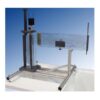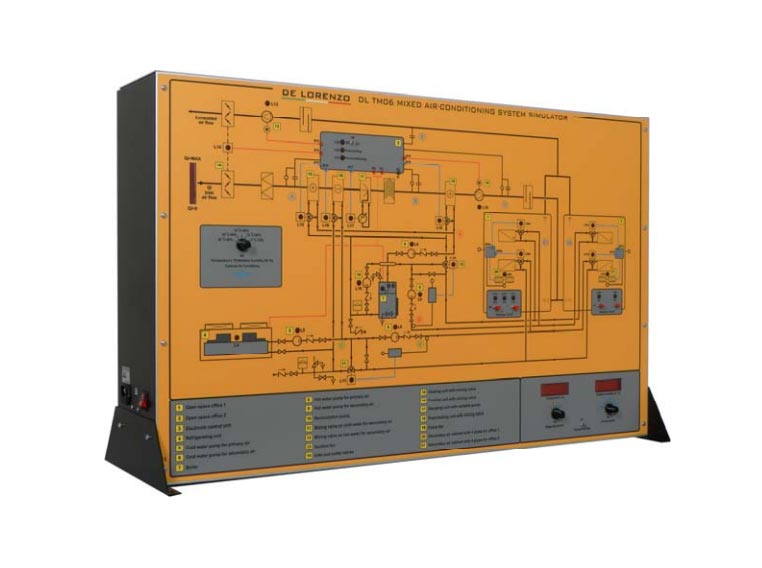TRAINING OBJECTIVES
It is possible to simulate the behaviour of components and systems, on the basis of the operating conditions which can be monitored directly on the panel or through Personal Computer by teacher and students.
The Personal Computer constantly keeps under control the simulation in progress and displays its behaviour through analog and digital signals and meters; in this way the student, through measurements and tests, can go on with the troubleshooting.
TECHNICAL DESCRIPTION
The mixed air‐water conditioning system, with four‐duct air convectors is composed of the following main elements:
• Air treatment unit (ATU) complete with heating, cooling, humidifying and post‐heating batteries;
• Air duct, with delivery fan, ejection fan, motorized shutter for treated air ejection and treated air renewal
• Boiler and refrigerating unit for the production of the hot and of the cool fluid to be used in the ATU batteries and in the four‐duct air convectors;
• Electronic station for data recording concerning temperature and humidity and for the subsequent adjustment and opening of the actuators and air‐ conditioning devices;
• Environment to be air‐conditioned composed of offices, provided with four‐duct air convectors, system for air delivery and for its recovery;
• Possibility to simulate the external temperature and humidity conditions;
• Possibility to simulate the crowding of the offices and, consequently, the relevant thermal and sensitive loads;
• Possibility to display the percentages of the renewed air;
• Possibility to display the temperature and the humidity of the treated air, in various points of the system;
• Possibility to display the temperatures of the hot and cool fluid supplying the batteries
MIXED AIR‐CONDITIONING SYSTEM
The simulator allows the study, the performing of experiments and the troubleshooting for the following system:
• Mixed air‐water conditioning system, with four‐duct air convectors
This system is reproduced on the panel, through a colour representation which allows a complete analysis of the fluid circuit, of its components and of the electrical/electronic circuit for control and regulation.
















